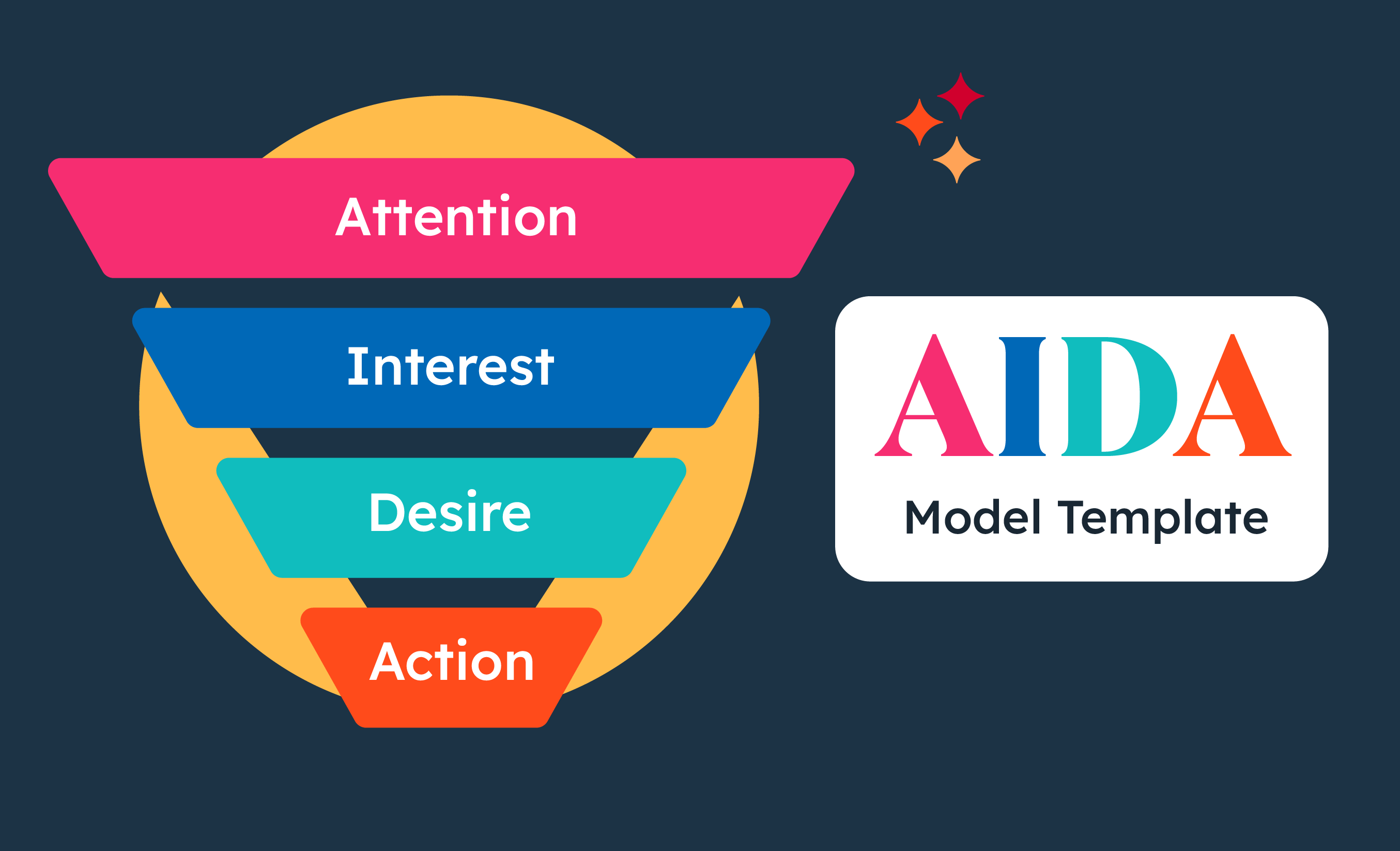In the dynamic world of marketing, crafting compelling messages that grab attention, arouse interest, create desire, and spur action is essential for success. One tried-and-true method for achieving this is the AIDA model. Developed in the late 19th century by E. St. Elmo Lewis, the AIDA model remains a cornerstone in marketing communication strategies, guiding marketers in creating messages that resonate with their target audience. In this article, we delve into the depths of the AIDA model, exploring its components and providing actionable insights on how to leverage it to write impactful marketing messages.
Understanding the AIDA Model: The AIDA model is an acronym that stands for Attention, Interest, Desire, and Action. It represents a sequential framework that outlines the stages a consumer goes through before making a purchase decision. Let’s break down each stage:
- Attention: The first step in the AIDA model is grabbing the audience’s attention. In today’s fast-paced world inundated with information, capturing attention is more challenging than ever. Marketers employ various techniques such as catchy headlines, vibrant visuals, or intriguing opening statements to hook the audience and compel them to pay attention to their message. Whether it’s a bold statement, a captivating image, or a compelling statistic, the key is to make the audience stop scrolling and take notice.
- Interest: Once attention is captured, the next objective is to sustain that interest. In this stage, marketers need to provide valuable information or present their product/service in a way that resonates with the audience’s needs or desires. This could involve highlighting unique features, addressing pain points, or showcasing how the product/service can solve a problem or improve the consumer’s life. By piquing the audience’s curiosity and demonstrating relevance, marketers can keep them engaged and eager to learn more.
- Desire: Having captured attention and piqued interest, the next step is to cultivate desire for the product/service. This involves appealing to the audience’s emotions and aspirations, painting a vivid picture of how their lives would be enhanced by owning or using the offering. Testimonials, case studies, and storytelling are effective tools for building desire, as they provide social proof and create a sense of connection with the brand. By tapping into the audience’s desires and aspirations, marketers can ignite a desire to own the product/service and create a sense of urgency to act.
- Action: The final stage of the AIDA model is to prompt action. This could be making a purchase, signing up for a newsletter, requesting more information, or any other desired outcome. To facilitate action, marketers need to provide clear and compelling calls-to-action (CTAs) that guide the audience on what steps to take next. Whether it’s a clickable button, a link, or a toll-free number, the CTA should be prominently displayed and convey a sense of urgency or exclusivity to motivate immediate action.
Implementing the AIDA Model in Marketing Messages: Now that we’ve explored the components of the AIDA model, let’s discuss how to apply it in crafting marketing messages:
- Attention-Grabbing Headlines: Start your message with a captivating headline that sparks curiosity or addresses a pain point. Use power words, numbers, or questions to draw the audience in and make them eager to learn more.
- Compelling Visuals: Incorporate eye-catching visuals such as images, videos, or infographics to complement your message and enhance its appeal. Visuals have the power to convey emotions, simplify complex information, and leave a lasting impression on the audience.
- Engaging Content: Provide valuable content that resonates with your target audience’s needs, interests, or aspirations. Whether it’s educational articles, entertaining videos, or inspiring stories, tailor your content to address the audience’s pain points and demonstrate how your offering can provide a solution.
- Social Proof: Include testimonials, reviews, or endorsements from satisfied customers to build trust and credibility. Social proof reinforces the value of your product/service and alleviates any doubts or objections the audience may have.
- Persuasive Call-to-Action: End your message with a clear and compelling call-to-action that prompts the audience to take the desired action. Use action-oriented language, such as “Buy Now,” “Sign Up Today,” or “Learn More,” and create a sense of urgency or scarcity to motivate immediate action.
Case Studies and Examples: To illustrate the effectiveness of the AIDA model, let’s consider a real-life example:
Imagine you’re a fitness brand promoting a new line of workout apparel. Your marketing message might follow the AIDA model as follows:
Attention: “Transform Your Workouts with Our Stylish Activewear!” Interest: Highlight the features and benefits of your apparel, such as moisture-wicking fabric, flattering design, and durability. Desire: Showcase testimonials from fitness enthusiasts who have experienced improved performance and confidence while wearing your apparel. Action: Encourage viewers to shop now with a limited-time discount code or offer a free shipping incentive for first-time customers. Conclusion: In today’s competitive marketplace, mastering the art of crafting persuasive marketing messages is essential for capturing the attention and interest of your target audience. By leveraging the AIDA model, marketers can create messages that resonate with consumers, cultivate desire for their offerings, and prompt action. Whether it’s through attention-grabbing headlines, engaging content, or persuasive calls-to-action, the AIDA model provides a proven framework for writing compelling marketing messages that drive results.
